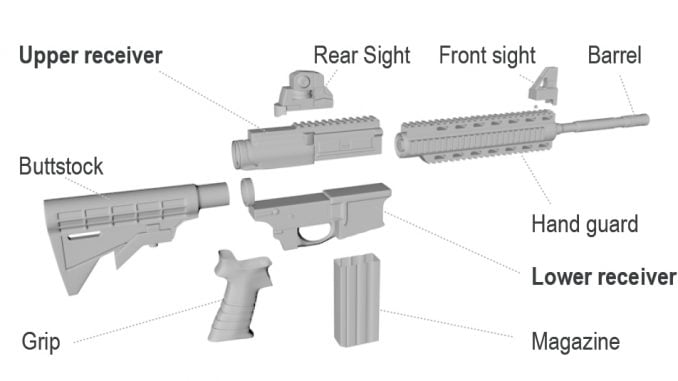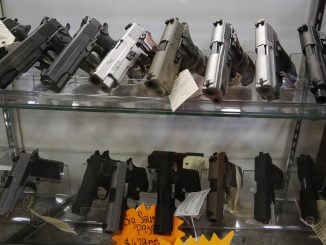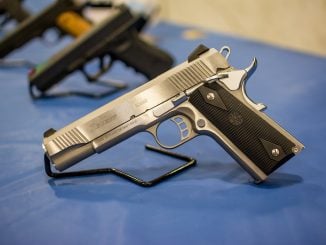
DALLAS, Texas — A design feature of the AR-15 rifle has raised a technical legal question that is derailing cases against people who are charged with illegally buying and selling firearms under federal law.
At issue is whether a key part of one of America’s most popular firearms meets the definition of a gun that prosecutors have long relied on to make charges.
For decades, the federal government has treated a mechanism called the lower receiver as the essential piece of the semiautomatic rifle and consider that single part to constitute a gun. Prosecutors regularly bring charges based on that specific part.
But some defense attorneys have recently argued that the part alone does not meet the definition in the law. A change in the legal interpretation could limit criminal prosecutions where possession of a gun is essential to the charge. Some say the rulings could undermine firearms regulations nationwide.
“Now the cat is out of the bag, so I think you’ll see more of this going on,” said Stephen Halbrook, an attorney who has written books on gun law and history. “Basically, the government has gotten away with this for a long time.”
Cases involving lower receivers represent a small fraction of the thousands of federal gun charges filed each year. But some people accused of illegally selling or possessing the parts, including convicted felons, have argued that a single part does not constitute a gun and have won acquittals or dismissals of gun charges.
Since 2016, at least five defendants have challenged the government and succeeded in getting some charges dropped or seeing their cases dismissed entirely. Three judges have rejected the government’s interpretation of the law.
Federal regulations define a firearm’s “frame” or “receiver” as the piece considered to be the gun itself. But in an AR-15, the receiver is split into upper and lower parts — and some of the components listed in the definition are contained in the upper half. That has led judges to rule that a lower receiver alone cannot be considered a gun.
The lower receiver sits above the pistol grip, holds the trigger and hammer, and has a slot for the magazine. By itself, it cannot fire a bullet. But by treating the piece as a firearm, the Bureau of Alcohol, Tobacco, Firearms and Explosives is able to regulate who can obtain it. Because authorities consider the part to be a gun, people prohibited from having firearms have been charged for possessing them.
In 2018, prosecutors said a ruling against the government would “seriously undermine the ATF’s ability to trace and regulate firearms nationwide.” CNN first reported the case and its implications.
Last month, a federal judge in Ohio dealt the latest blow, dismissing charges against two men accused of making false statements to buy lower receivers.
The gun industry estimates there are more than 17 million AR-15-style rifles in circulation, and the National Rifle Association once dubbed it “America’s rifle.”
In one case, the government claimed a defendant, who was prohibited from buying or possessing firearms because of felony convictions, used another man as a proxy to purchase 50 lower receivers. The 2018 indictment also charged him with having 15 lower receivers.
The case rested on the ATF’s claim that the components were legally firearms. Judge James Carr called that a “plainly erroneous” reading of the law and said the agency has a duty to fix the problem.
“Misapplying the law for a long time provides no immunity from scrutiny,” Carr wrote in his order to dismiss.
In one case, an ATF expert testified that the same principle could apply to many other firearms. Prosecutors worry that more rulings against the government could allow people prohibited from having guns to purchase weapons piece by piece with no regulation or background check.
Franklin Zimring, a professor at the University of California, Berkeley School of Law, is skeptical of that claim and said the same behavior could often be prosecuted under state laws.
The AR-15 is a popular model for gun enthusiasts to legally build at home. The rifles are sometimes constructed out of partially machined receivers, often called “80% receivers,” which can be bought and sold without background checks and need not have serial numbers because they are unfinished.
A proposal by Democratic lawmakers in Delaware to outlaw homemade guns – which don’t have serial numbers or are fashioned from parts created with 3-D printers – has cleared its first legislative hurdle.
A Democrat-led House committee voted to release the bill last week after an hourlong public hearing, although its chief sponsor, House Majority Leader Valerie Longhurst, said she plans to amend the bill after meeting Tuesday with representatives of the National Rifle Association.
The bill makes it a felony to possess or manufacture an “untraceable” firearm.
It also criminalizes “covert firearms” designed to not resemble a firearm, as well as “undetectable” firearms made of nonmetal substances so as not to set off metal detectors.
Possession of an unfinished firearm frame or receiver without a serial number would also be a felony.



